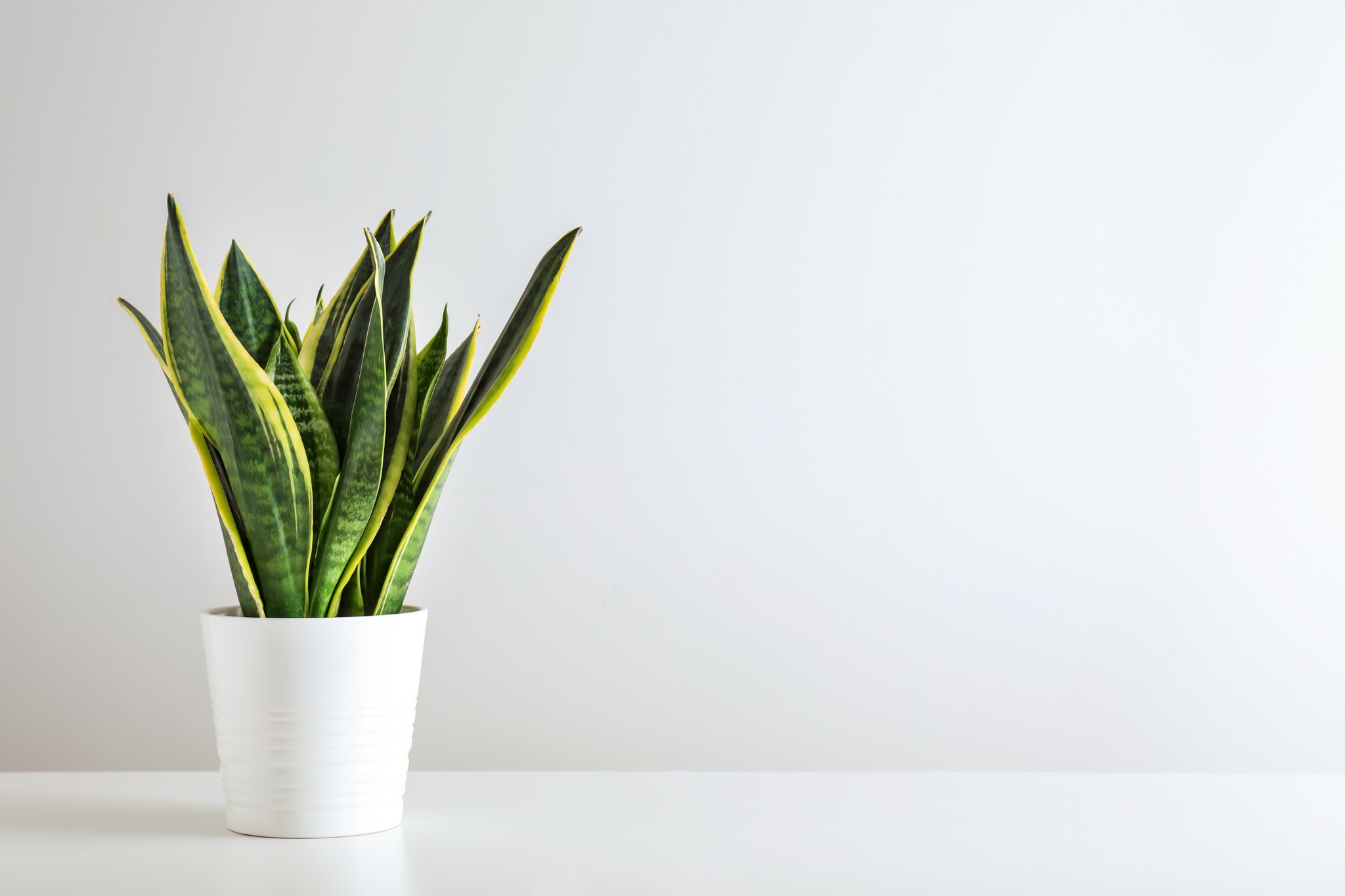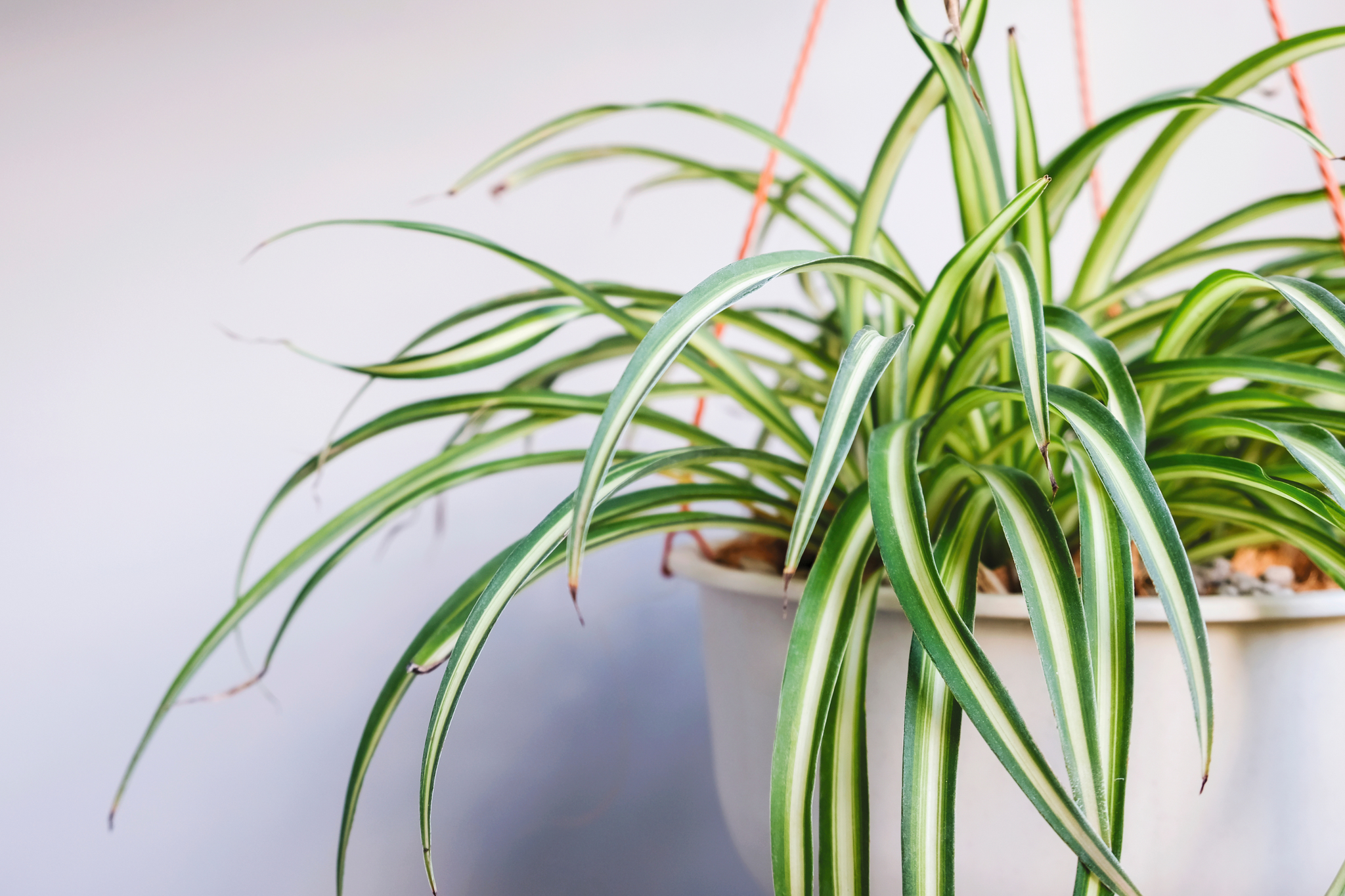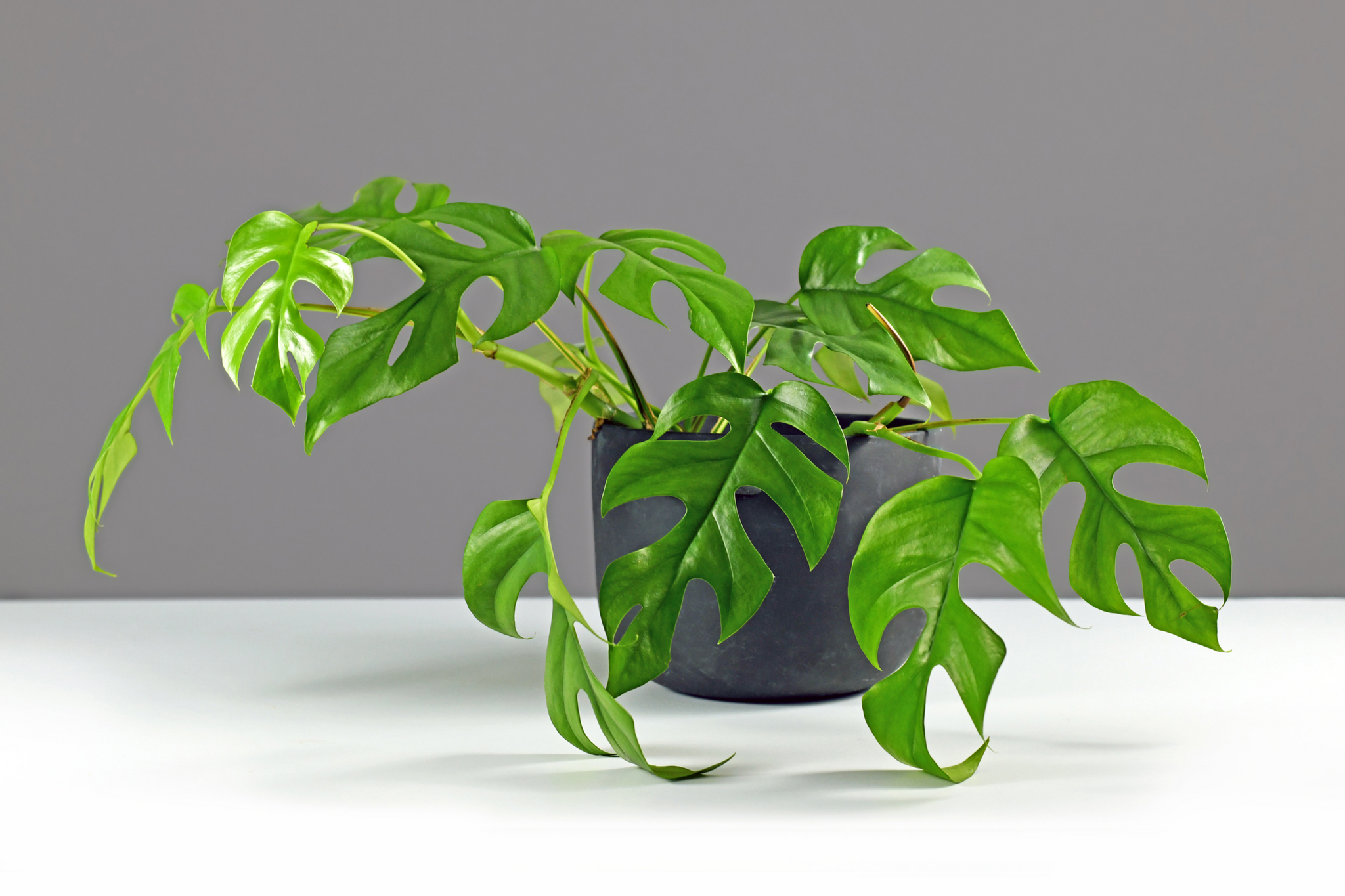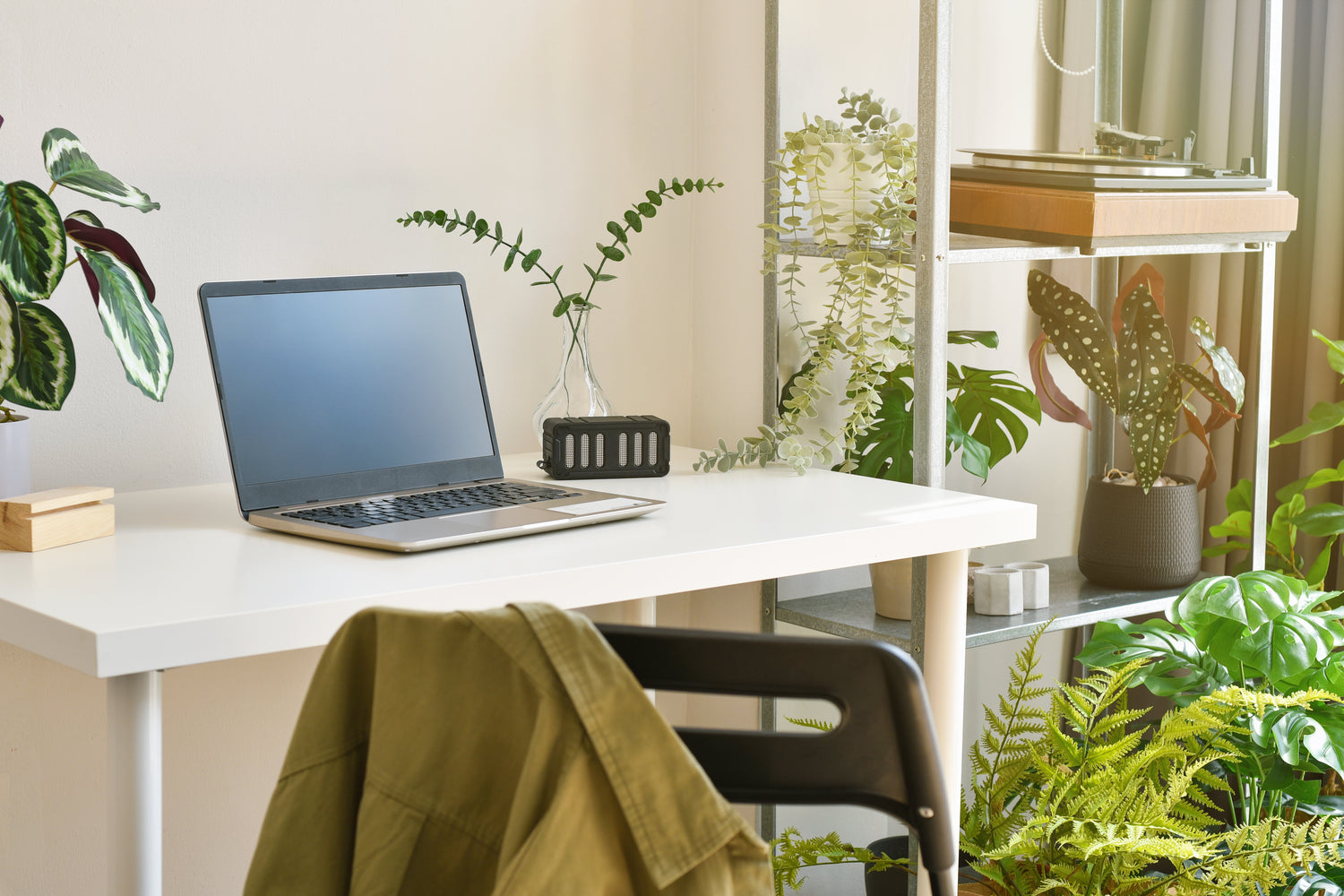You may have heard that indoor plants not only enhance the overall aesthetic of a space but that their presence can boost mood and productivity.
The American Psychological Association conducted a study examining plants' impact on air quality, concentration, productivity, and workplace satisfaction. Researchers observed enhanced outcomes when offices were enriched by plants and measured a 15% increase in productivity after "lean offices" - offices with a desert-like aesthetic - were enriched with plant life.
You don't have to have a green thumb to raise a house plant. Many common house plants need only a few minutes of attention each week to survive and thrive! While some plant varieties require special conditions and care, plenty of low-maintenance plants will survive a few weeks of neglect. Not that you would ever neglect your plant babies…right?
We've put together some of the easiest plants to take care of that anyone can grow!
Devil's Ivy (Golden Pothos)

Epipremnum aureum, more commonly known as Golden Pothos, is one of the most popular indoor hanging plants. You will often find Pothos planted in hanging baskets with luscious vines trailing the edges.
Caring for this little Devil is relatively easy, as it's quite hard to kill, hence the name "Devil's Ivy." Pothos are fast-growing and can thrive in bright indirect sunlight and dim lighting, such as interior lighting. Soil-planted Pothos like to dry out before watering and will even show you when it's thirsty with a dramatic display of drooping leaves. Don't fret if you find a droopy Pothos – it will perk right up shortly after watering.
Pothos plants are so popular that horticulturalists have developed many varieties which boast beautiful variegation and similar ease of care. If you love Golden Pothos and want to add more variety to your plant fam, then adopt a Marble Queen, Manjula, Cebu Blue, or Satin Pothos!
Optimal Conditions and Care Overview:
|
Light |
Bright, indirect sunlight |
|
Water |
Average, when dry |
|
Temperature |
60-90°F |
|
Humidity |
Average-high |
|
Soil |
Well-draining potting soil |
|
Fertilizer |
NPK 20-20-20 Every 2 weeks to a month in the growing season |
|
Toxicity |
Toxic when consumed |
Mother-In-Law's Tongue (Snake Plant)

Well known as low-light tolerating and air-purifying, Snake Plants are one of the most popular and hardy houseplant species. The name, Mother-in-law's tongue, comes from the pointed 'sword-like' leaves, which symbolize the sharp tongue of a Mother-in-law who can't hold her tongue!
Generally slow to grow in dim indoor lighting, snake plants can thrive in a wide range of lighting, are easy to grow, and are known to be nearly indestructible.
Optimal Conditions and Care Overview:
|
Light |
Bright, indirect sunlight |
|
Water |
Every 2 to 8 weeks |
|
Temperature |
70-90°F |
|
Humidity |
Average |
|
Soil |
Well-draining sandy soil |
|
Fertilizer |
NPK 10-10-10 Once a month in the growing season |
|
Toxicity |
Toxic when consumed |
ZZ Plant

If you have a 'brown thumb,' this plant is for you. Zamioculcas zamiifolia is one of the hardiest houseplants that some even say thrives on neglect. ZZ plants are known for their broad, dark green leaves. Another variety of ZZ plant that is gaining popularity is the Raven® ZZ by Costa Farms. This variety has leaves that emerge in an electric lime green color, slowly turning deep black as they mature.
ZZ plants are slow-growing, only reaching about three feet tall, and are known as flowering plants. ZZ plants rarely produce flowers, so if you have a flower ZZ plant, congratulations, you're a plant God.
Optimal Conditions and Care Overview:
|
Light |
Bright, indirect sunlight |
|
Water |
When soil is dry, around 2" deep |
|
Temperature |
60-80°F |
|
Humidity |
Average |
|
Soil |
Well-draining potting soil |
|
Fertilizer |
NPK 10-10-10 Once every 3 months |
|
Toxicity |
Toxic when consumed |
Spider Plant

Known for their spider-like appearance, spider plants are a perfect addition to any home or office. Spider Plants are easy to grow and are even easier to propagate.
When Spider Plants are happy, they will shoot off long stems of small white flowers. These flowers will turn into mini versions aptly coined 'spiderettes' which develop roots as they grow. These can be propagated and should be removed, and they will deplete nutrients from the mother plant over time. Just like the adult child who just won't move out…
Optimal Conditions and Care Overview:
|
Light |
Bright, indirect sunlight |
|
Water |
Once per week |
|
Temperature |
60-90°F |
|
Humidity |
Above average |
|
Soil |
Loamy, well-draining potting soil |
|
Fertilizer |
NPK 15-15-15 diluted Once every 2 weeks |
|
Toxicity |
Considered non-toxic |
Mini Monstera

The leaves of the Raphidaphora Tetrasperam are reminiscent of its Monstera Deliciosia cousin, but it is an entirely different plant! The exceedingly popular Monstera Deliciosa is known to grow massive and, in optimal conditions, can quickly overtake an entire room in just a few years. For those who may not have a whole room to dedicate to a plant, the Mini Monstera is a great way to enjoy the coveted fenestrated leaves on a much smaller scale.
Mini Monsteras are vining plants, similar to Pothos and Philodendron. They love to climb and will latch with their aerial roots, so it's best to provide support like a trellis or moss pole.
Optimal Conditions and Care Overview:
|
Light |
Bright, indirect sunlight |
|
Water |
Keep moist but not saturated |
|
Temperature |
55-85°F |
|
Humidity |
Above average |
|
Soil |
Loamy, well-draining potting soil |
|
Fertilizer |
NPK 15-15-15 diluted or slow-release Once a month |
|
Toxicity |
Toxic when consumed |
Frequently Asked Plant Questions:
Does my pot need drainage holes?
Absolutely! Attempting to water a plant appropriately without drainage holes is risky business. Over watering is the most common cause of house plant death due to root rot. Drainage holes allow thorough watering without leaving the plant to sit in water. You can keep your plant in its plastic nursery pot for as long as it fits and add a saucer or cover pot – a decorative pot with no drainage holes – to catch water. Be sure to empty the saucer or cover pot shortly after watering.
Do I need to fertilize my house plants?
You should! In addition to sunlight, plants need nutrients to thrive. Since houseplants are confined to pots, the nutrients in the potting soil get depleted, and your plants will suffer. A simple rule of thumb is to fertilize with an organic fertilizer during the growing season – or when your plants are actively growing.
Are office lights enough for plants?
It depends. All plants need light to survive, but adaptable plants like the Devil's ivy and philodendron can adapt to artificial lighting. You can also supplement with grow lights.
What plants do well in office lighting or low light?
Many plants can tolerate low light situations, but houseplants that thrive in office lighting are typically dark green leafy plants like the peace lily, Jade pothos, or snake plant.


